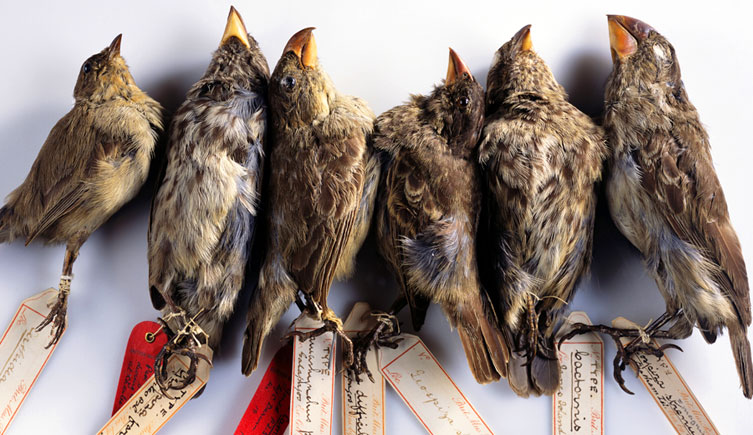
Hudsonian godwit, Limosa haemastica, from Captain FitzRoy’s collection.
Some of our most famous specimens were collected by Charles Darwin and Captain Robert FitzRoy during the round-the-world voyage of HMS Beagle between 1831 and 1836.
Accepted on board as a gentlemanly companion for Captain Robert FitzRoy (1805-1865), Darwin carefully investigated the geology and zoology encountered during the long surveying mission, keeping detailed notebooks and also collecting specimens.
Overall, he collected nearly 500 bird skins, together with further birds preserved in spirit, various bird parts and a small number of nests and eggs.
Allowed to dispose of them to the institution of his choice, Darwin gave the vast majority of his collection to the museum of the Zoological Society of London, where the specimens were examined by the renowned ornithologist John Gould (1804-1881). Thirty-nine new species and subspecies of bird were subsequently described, mostly by Gould.
The most famous of the discovered species are undoubtedly the Galapagos finches, commonly known as Darwin’s finches. These are often credited as the inspiration that led to Darwin formulating his ideas on evolution. However, it was Gould that recognised that the finches were closely related; Darwin originally recorded them as being from a range of different bird families.
The birds that did attract Darwin’s interest in the Galapagos were several new varieties of mockingbird, later confirmed by Gould as new species. It was the differences that Darwin noticed between the mockingbirds on different islands that were certainly a crucial part of the evidence that led him to the conclusion that species may change.
-

Saffron cowled Blackbird collected by Captain FitzRoy
-

Type specimens of Galapagos mockingbirds, collected by Charles Darwin in 1835.
-

A line-up of Charles Darwin's finch specimens from the Galapagos Islands.
Moving collections
In 1855, the Zoological Society of London's museum was broken up and the collections sold. The then British Museum purchased a significant number of them, particularly type specimens, but Darwin’s Beagle bird specimens nevertheless were widely dispersed across many public and private collections.
Over time, more specimens reached the Museum amongst donated private collections, making it the largest single collection of Darwin’s Beagle birds with nearly 200 specimens. The remainder of known specimens are spread across seven other collections, but nearly half the original collection remains unaccounted for.
FitzRoy’s collection
Captain FitzRoy himself was tasked with gathering specimens and several other crew members were also involved in collecting, assisting both Darwin and FitzRoy.
As a representative of the Royal Navy, FitzRoy’s collections were not considered his own to dispose of, and were consequently presented to the then British Museum.
FitzRoy’s surviving bird collection also numbers nearly 200 specimens, but this represents almost the entire original collection.
Research is presently underway in the Bird Group to trace the history of FitzRoy’s birds, in particular to link them back to surviving archives in order to restore their full data. It is fascinating to compare Darwin’s and FitzRoy’s collections and examine the similarities and differences between them. We hope eventually to understand the role that FitzRoy’s collection may have played in helping Darwin develop his revolutionary ideas.
We are examining the similarities and differences between Darwin’s and FitzRoy’s collections to determine the role that FitzRoy’s collection may have played in helping Darwin develop his revolutionary ideas.
Looking for a specimen?
The bird collection is being digitised
Related information

Accessing the collections
Scientists and collections management specialists can visit the collections and borrow specimens for research.
Collections management
Our duty is to provide a safe and secure environment for all of our collections.